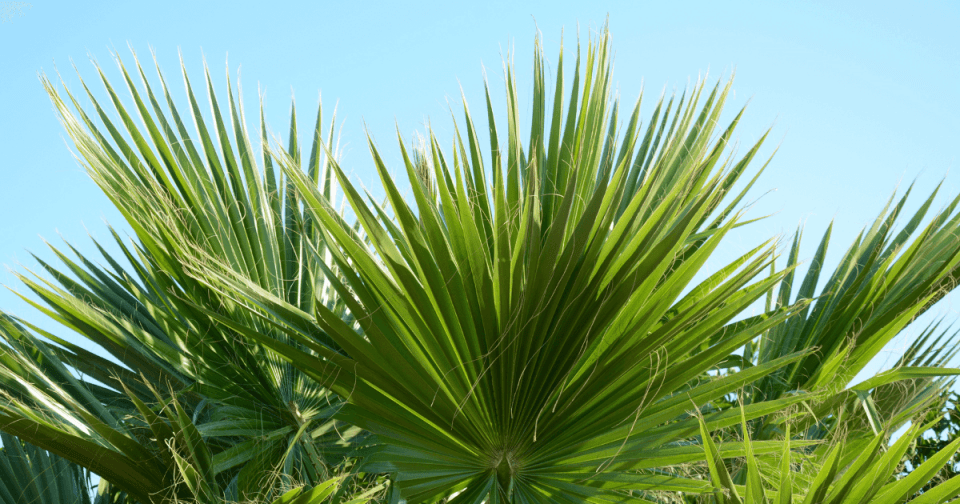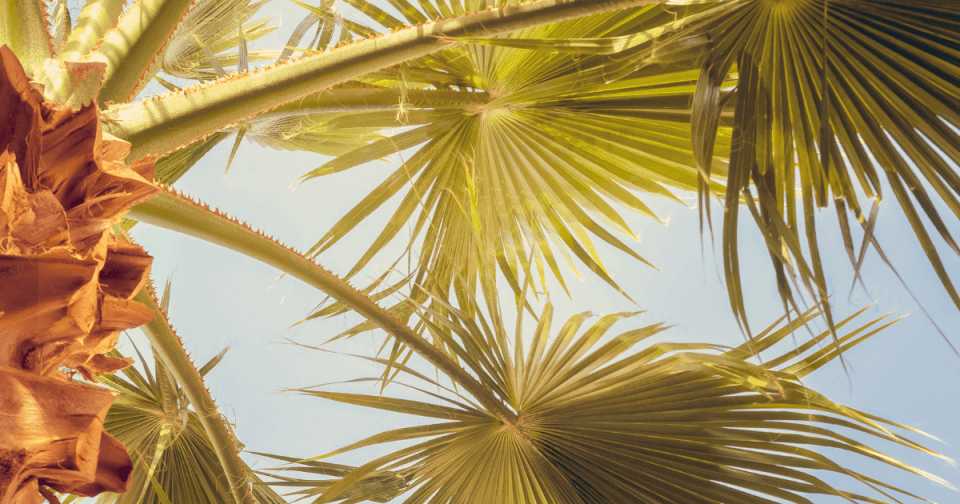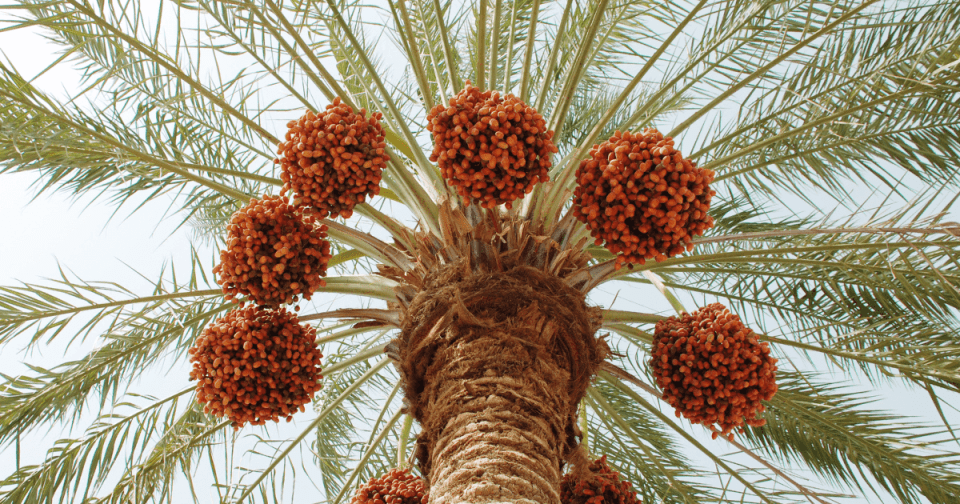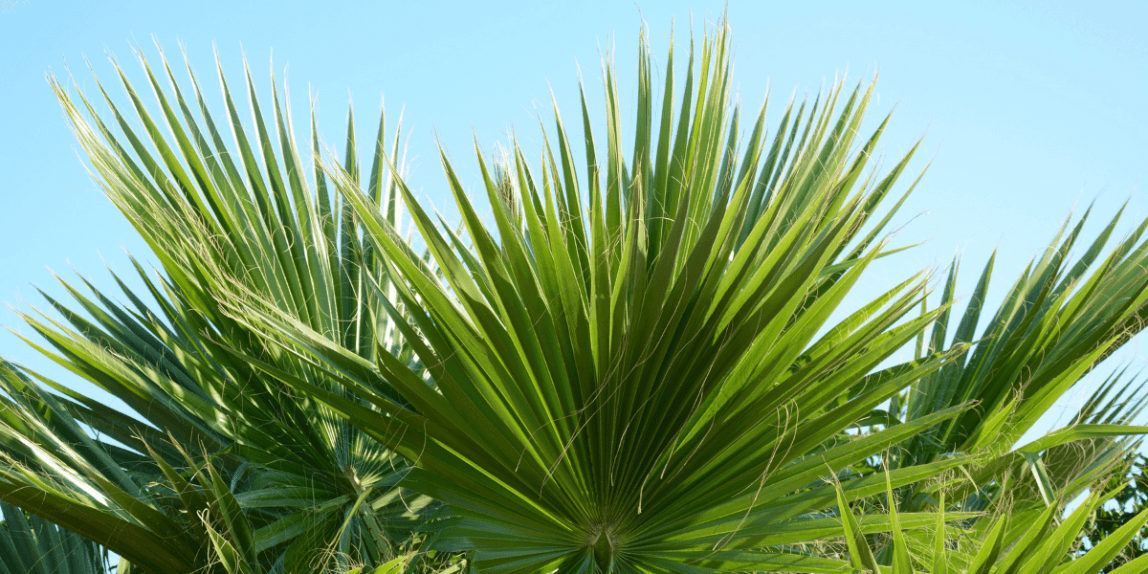Reading time: 4 minutes

Ahhhh, summertime in our sunny Southwest desert! As temperatures exceed 100 degrees, you’re now well aware that the summer heat is not for the faint of heart. Many desert gardeners prefer to add greenery to the landscape to help cool down their area, but unfortunately the window for planting has closed. During this time of year, most plants will struggle to establish themselves without facing some level of stress; however, palms are the exception! The optimal palm planting season spans from April to September, so now is the perfect time to turn your outdoor space into a palm paradise. If you’re interested, follow along for a few tips on how to get started!
1. Assess your landscape and choose the right area.
When choosing where to plant your palm, be sure to designate an area that is a minimum of 3-4 feet away from any structure or wall. Additionally, consider how large the palm will grow to be. It’s important to ensure that there is enough growing room in the area you intend to plant in. For more information on mature sizes of specific varieties, click here!
2. Pick the right palm for your area.
Popular palm varieties for Southern Nevada include:
- California Fan Palm
- Canary Island Date Palm
- Date Palm
- Mediterranean Fan Palm
- Mexican Fan Palm
- Pindo Palm
- Pygmy Date Palm
- Sago Palm
- Windmill Palm
Certain palm varieties can grow to be quite large and may not be suitable for home landscapes. Mediterranean Fan Palms, Pygmy Date Palms, Sago Palms, and Windmill Palms are great varieties for planting in front or backyards, as their mature size is not enormous.

3. Plant your palm!
Although palms can be planted year-round, the optimal planting time is from April to September, especially for cold-sensitive varieties. Before planting, dig a hole that is 2-3x the width of the root ball and just as deep. It is important to ensure that the soil is well-draining prior to placing the palm in the hole. For more information on how to check soil drainage, check out Star Note #001 – Planting Guide. If the area has well-draining soil, place the palm in the hole, then backfill with 1 part soil amendment, and 2 parts native soil, To help establish the palm in its new home, use a starter fertilizer such as Dr. Q’s Gold Dust and Dr. Q’s Plant Tonic to help prevent transplant shock.
4. Care for your palm to keep it healthy and strong.
When watering, make sure that water is not hitting the trunk of the palm, as this can cause tissue erosion that will lead to the palm becoming destabilized and/or breaking. Once established, most palms will tolerate drought, but will thrive if they receive regular, deep watering. In the winter, cut back watering frequency, as the palms are not actively growing during this season. Palms* should only be fertilized in the summer. Memorial Day, Fourth of July, and Labor Day are good times to do so. Palms should also be hosed off periodically to help control spider mites and sucking insects that might find refuge in the fronds.
*The Sago Palm is not a true member of the palm family, so it should not be fertilized in the summer.
5. Prune only when necessary.
A common misconception is that frequent palm pruning can increase the speed of growth; however, over-pruning can actually lead to slower growth. Because plants need chlorophyll** to photosynthesize*** over-pruning can remove healthy green fronds that would otherwise aid the photosynthesis process. Pruning should only be conducted to remove dead/dying fronds, to prevent potential fire or safety hazards, or to remove seeds or fruit. If your palm becomes too large, you might consider hiring a professional to visit your home, as there are dangers associated with pruning large palm trees.
**The green pigment in plants that is responsible for the absorption of light.
***Biological plant process used to synthesize foods and encourage new growth.

Now that you have a frond-filled landscape, you can sit back and enjoy the sunny summer days. By choosing the right area, selecting the appropriate palm variety, and providing proper maintenance, you’ll have a shadier, more tropical landscape for all summers to come!
Follow us for the latest gardening news and updates!
